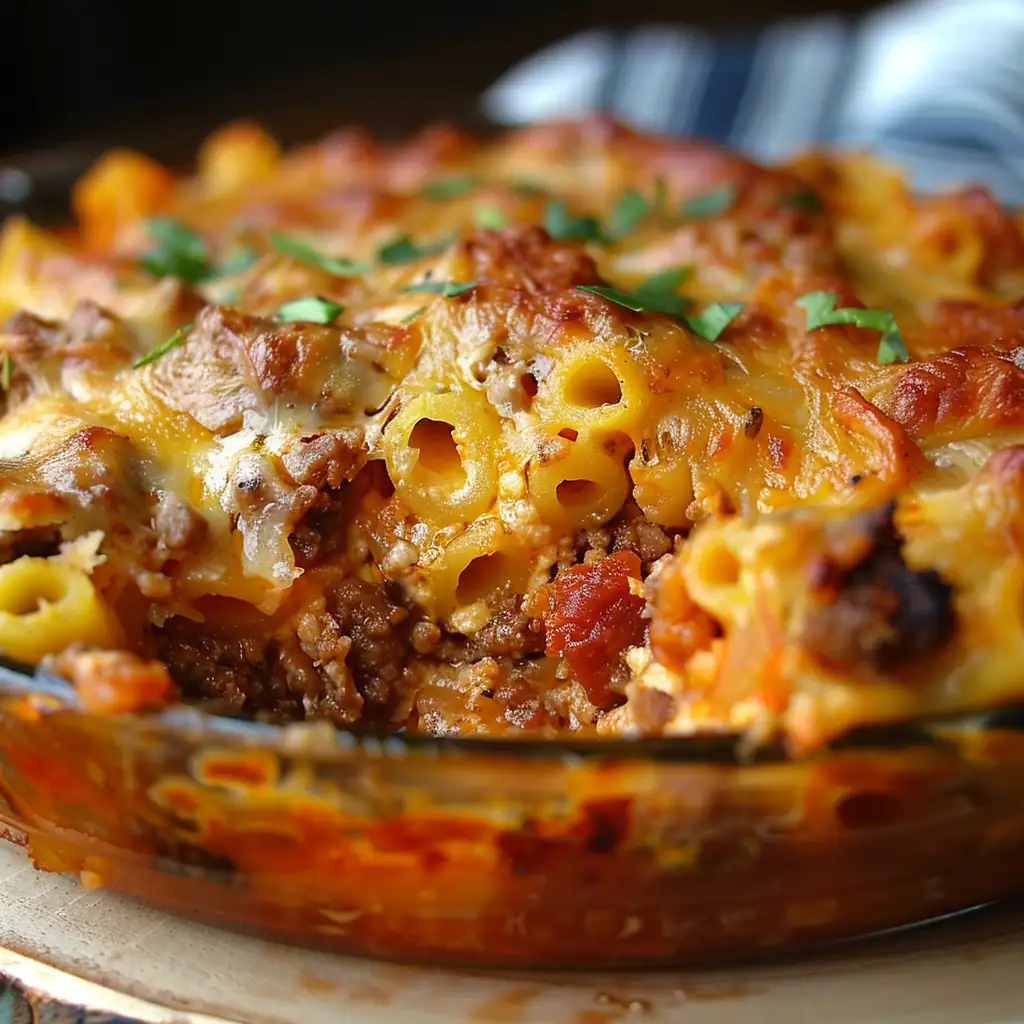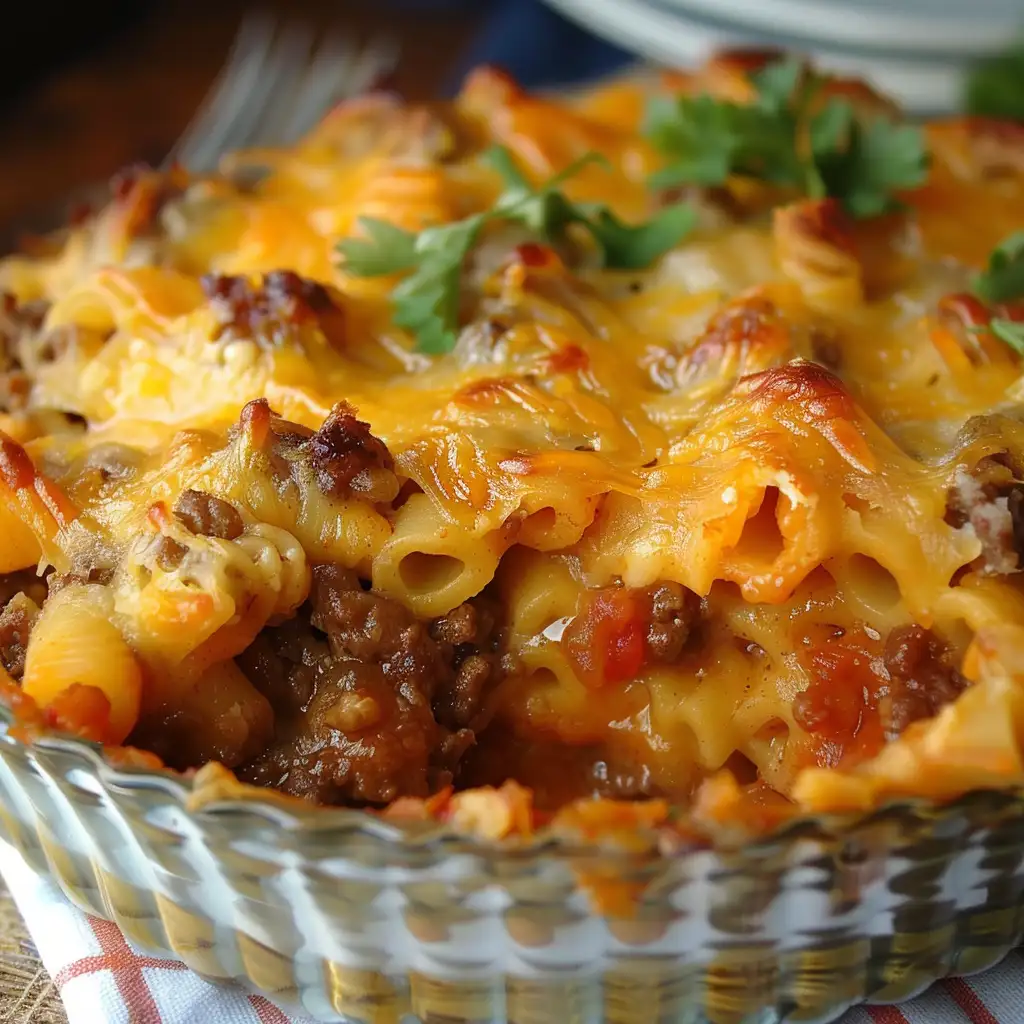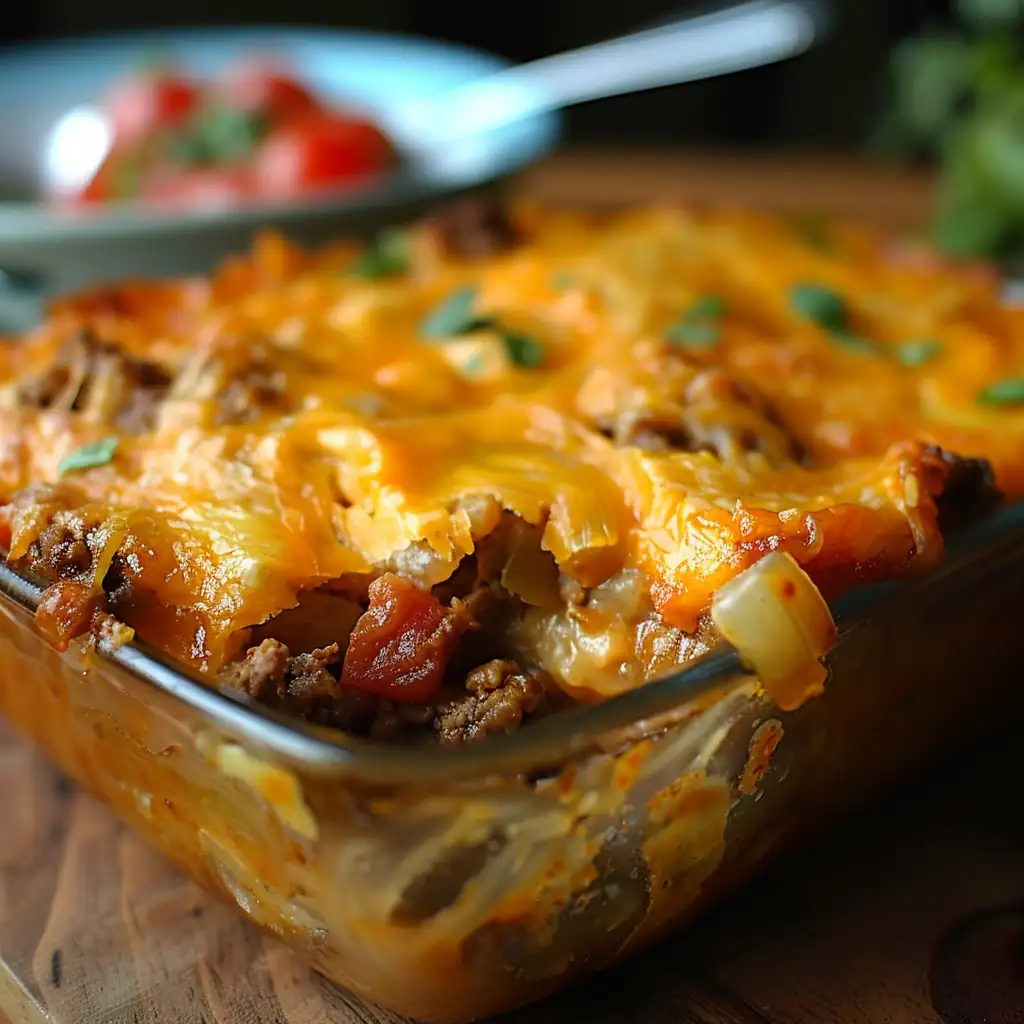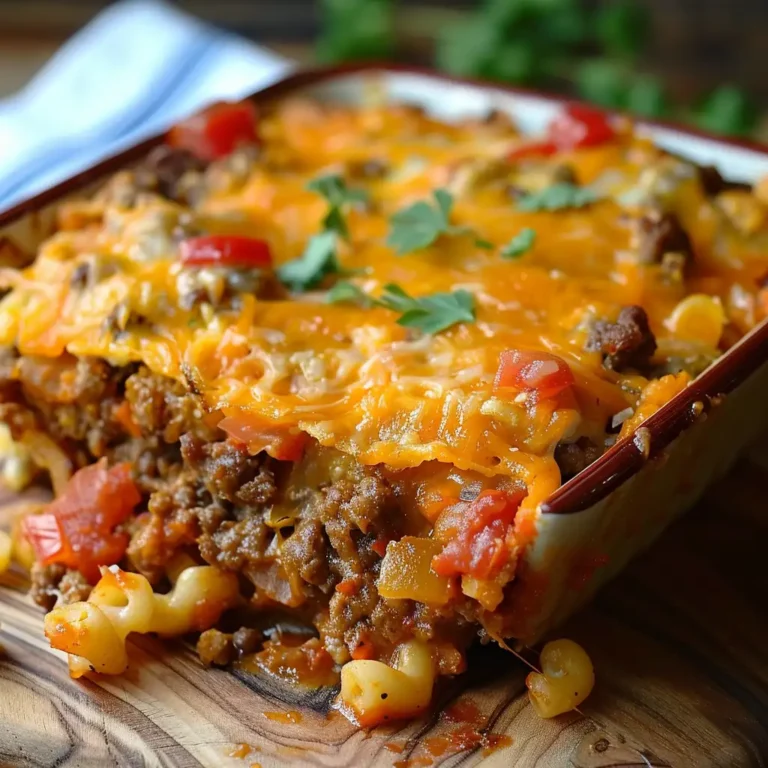Introduction to Ground Beef Casseroles
Ground beef casseroles have long been a comfort food staple, beloved for their heartiness and ease of preparation. The evolution of the casserole can be traced back to post-war America, where the need for economical, filling meals led to the innovation of one-dish dinners. Casseroles, with their simple layering of ingredients baked to perfection, quickly became a household favorite. Ground beef, due to its affordability and versatility, emerged as a popular base for these dishes. Across different cultures, variations of the ground beef casserole reflect local flavors and ingredients, from the spicy Tex-Mex casseroles of the American Southwest to the rich and creamy moussaka of Greece. Each variation underscores the adaptability of the casserole to different culinary traditions.
Why Ground Beef Casseroles Are Loved
- Versatility and Convenience: Ground beef casseroles are a testament to culinary flexibility. With just a few basic ingredients like ground beef, pasta or potatoes, and a binding sauce, one can create an endless variety of dishes. This adaptability makes the ground beef casserole a go-to for busy weeknights, offering a simple yet satisfying meal with minimal prep and clean-up.
- Budget-Friendly and Feeds a Crowd: Perhaps one of the most compelling reasons ground beef casseroles are so beloved is their ability to stretch a dollar. Ground beef is cost-effective, and when combined with other inexpensive ingredients, can feed a large family or provide leftovers for the week. The hearty and filling nature of casseroles also means that a little goes a long way, making them ideal for large gatherings or family dinners.
The universal appeal of ground beef casseroles lies in their simplicity, comfort, and the joy of sharing a warm, homemade meal. For more on the history and cultural significance of casseroles, explore this guide to building better casseroles, which offers expert advice and insights into creating the perfect one-dish meal.
Essential Components of Ground Beef Casseroles
At the heart of every delicious ground beef casserole are several key ingredients that come together to create a comforting and savory dish:
- Ground Beef: Choosing the right type and selection of ground beef can greatly influence the flavor and texture of your casserole. Whether opting for lean ground beef for a healthier option or a fattier blend for richer flavor, the choice of beef can tailor the dish to your preference.
- Casserole Base: The foundation of a casserole can vary widely, from grains like rice or quinoa to potatoes or pasta. This base component is crucial for absorbing the flavors of the casserole and providing its substantial texture.
- Vegetables and Layering Ingredients: Incorporating a variety of vegetables not only adds nutrition but also layers of flavor. Common additions include onions, bell peppers, and mushrooms, but the possibilities are endless.
- Liquids: The right stocks, creams, and sauces bind the ingredients together and add moisture, ensuring the casserole is not dry. Tomato sauce, cream of mushroom soup, and chicken broth are popular choices.
- Cheese and Toppings: A generous topping of cheese adds a gooey, melty element that is irresistible, while breadcrumbs or crispy onions can offer a crunchy texture contrast.

Variations and Adaptations
Ground beef casseroles are endlessly adaptable, allowing for a wide range of variations and adaptations:
- Classic Recipes vs. Modern Twists: While traditional recipes focus on simple, hearty ingredients, modern twists might incorporate unexpected elements like spicy chipotle peppers or exotic spices to refresh classic flavors.
- Regional Variations and International Influences: From the Tex-Mex inspired casseroles with jalapeños and black beans to Italian-inspired versions with marinara sauce and mozzarella, ground beef casseroles can take on many forms, reflecting the diversity of culinary traditions around the world.
The adaptability of ground beef casseroles means that there’s a version out there for every taste and occasion. For inspiration on how to incorporate these essential components into your next casserole, check out Food Network’s Best Casserole Recipes, offering a collection of dishes that celebrate the versatility and comfort of the classic casserole.
Building the Perfect Casserole
Creating the perfect ground beef casserole involves more than just mixing ingredients together. Follow these steps for a dish that’s sure to impress:
- Preparing Your Ingredients:
- Begin by browning your ground beef over medium heat, ensuring it’s fully cooked.
- Cook your casserole base (whether it’s pasta, rice, or potatoes) until just shy of done, as it will continue cooking in the oven.
- Chop and sauté any vegetables you plan to include, enhancing their flavor.
- Layering for Success:
- Start with a layer of your base at the bottom of the casserole dish.
- Add a layer of cooked ground beef, followed by your sautéed vegetables.
- Pour your chosen liquids (such as stocks, creams, or sauces) evenly over the layers.
- Sprinkle a generous amount of cheese and any toppings for extra texture and flavor.
- Baking Tips for the Perfect Crust and Consistency:
- Preheat your oven as directed by your recipe. Consistent oven temperature is key.
- Cover the casserole with aluminum foil for the first half of baking to keep moisture in, then remove to allow the top to brown and crisp up.
- Let the casserole sit for a few minutes after baking for easier serving.
Customization and Substitutions
The beauty of casseroles lies in their flexibility and ease of customization:
- Making It Your Own with Add-Ins and Swaps:
- Consider adding different proteins like ground turkey or Italian sausage for a twist.
- Mix in various vegetables or substitute the grains for low-carb alternatives like cauliflower rice.
- Tips for Catering to Dietary Restrictions:
- For a gluten-free version, ensure your base and sauces are free of gluten-containing ingredients.
- Dairy-free cheeses and cream alternatives can accommodate those with lactose intolerance.
- Vegetarian? Swap the ground beef for lentils or a meat substitute, adjusting the seasoning as needed.
For more on mastering the art of casserole making, including how to perfectly balance flavors and textures, explore USDA Ground Beef Cooking and Handling Tips. Here, you’ll find valuable advice on safely preparing and handling ground beef, ensuring your casserole is not only delicious but also safe to enjoy.
Classic Ground Beef Casserole Recipes
Ground beef casseroles are a cornerstone of comfort food, offering warmth and satisfaction with each bite. Here are some traditional recipes that have stood the test of time:
- Shepherd’s Pie: A quintessential dish, Shepherd’s Pie layers ground beef simmered in a rich gravy with vegetables, topped with creamy mashed potatoes and baked until golden.
- Lasagna: This classic Italian casserole alternates layers of pasta with ground beef in marinara sauce, ricotta, mozzarella, and Parmesan cheeses, baked to cheesy perfection.
- Taco Casserole: Combining the flavors of a taco night, this casserole layers seasoned ground beef, tortilla chips, salsa, and cheese, offering a crunchy and savory twist.
Each of these recipes showcases the versatility of ground beef, transforming simple ingredients into memorable meals. For those looking to master these classic dishes, Food Network’s Best Casserole Recipes provides a wealth of inspiration and expert advice, ensuring every casserole is a hit.

Innovative Casserole Ideas
While traditional ground beef casseroles continue to be beloved, there’s room for creativity and innovation in the kitchen. Explore these fusion dishes and creative inspirations to elevate your casserole game:
- Korean Beef Casserole: Infuse your casserole with the flavors of Korea by layering bulgogi-seasoned ground beef with kimchi, topped with a sprinkle of sesame seeds and green onions.
- Mediterranean Moussaka: A delightful twist on the Greek classic, incorporate layers of ground beef seasoned with cinnamon and allspice, roasted eggplant, and a creamy béchamel sauce.
- Southwest Quinoa Bake: Mix ground beef with black beans, corn, quinoa, and a blend of spices for a hearty, protein-packed dish, finished with a layer of melted pepper jack cheese.
These innovative ideas blend the comforting essence of casseroles with bold, international flavors, offering a fresh take on the familiar. For those eager to explore these modern twists on the classic ground beef casserole, Epicurious Guide to Building Better Casseroles is an excellent resource, providing tips and tricks for successful casserole creations that are sure to impress.
Serving and Storage
Making Ahead and Freezing
Ground beef casseroles are ideal for making ahead and freezing, providing a convenient option for busy weeknights or future meals. Here are some tips to ensure success:
- Preparing in Advance: Assemble your casserole, cover it tightly with foil, and store it in the refrigerator for up to 24 hours before you plan to bake it.
- Freezing Instructions: To freeze, wrap the assembled but unbaked casserole securely with foil and then with plastic wrap. Freeze for up to 3 months. Thaw in the refrigerator overnight before baking.
- Reheating: If reheating a baked casserole, cover with foil and warm in a 350°F oven until heated through. For frozen assembled casseroles, extend the initial baking time, checking periodically for doneness.
Serving Suggestions
When it comes to serving ground beef casseroles, the right accompaniments can turn a simple dish into a feast:
- Accompaniments and Sides: Fresh salads, steamed vegetables, or crusty bread complement the richness of casseroles well.
- Presentation Tips: Serve the casserole in its dish for a rustic look, or plate individual portions with a garnish of fresh herbs for a touch of elegance.
For more detailed instructions on preparing and serving casseroles, check out USDA Ground Beef Cooking and Handling Tips, ensuring your dishes are not only delicious but also safe.
FAQs Section
Common Questions About Ground Beef Casseroles
- Ideal Ground Beef Fat Content: For casseroles, a lean-to-fat ratio of 80/20 strikes a good balance between flavor and texture without being too greasy.
- Preventing Soggy Casseroles: To avoid a soggy casserole, ensure your base (like pasta or potatoes) is slightly undercooked before assembling, as it will continue to cook in the oven.
- Vegetarian Casseroles: Absolutely! Substitute ground beef with lentils, chickpeas, or a plant-based meat alternative, and use vegetable broth as the liquid component.
- Layering Ingredients Effectively: Start with a layer that will absorb the sauce well, like pasta or rice, followed by your protein and vegetables. Top with sauce and cheese, ensuring even coverage for uniform cooking and flavor distribution.
Exploring the versatility and convenience of ground beef casseroles can lead to delicious discoveries and family favorites. For a deeper dive into creating the perfect casserole, including addressing common concerns and substitutions, the Epicurious Guide to Building Better Casseroles offers invaluable insights and innovative ideas to enhance your cooking repertoire.


